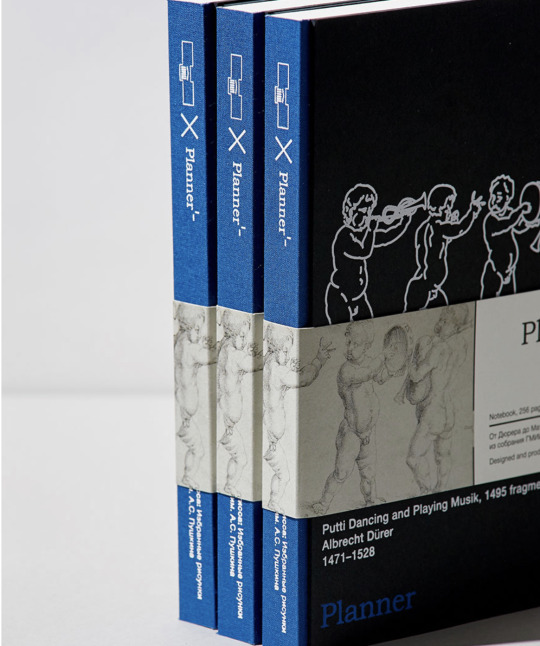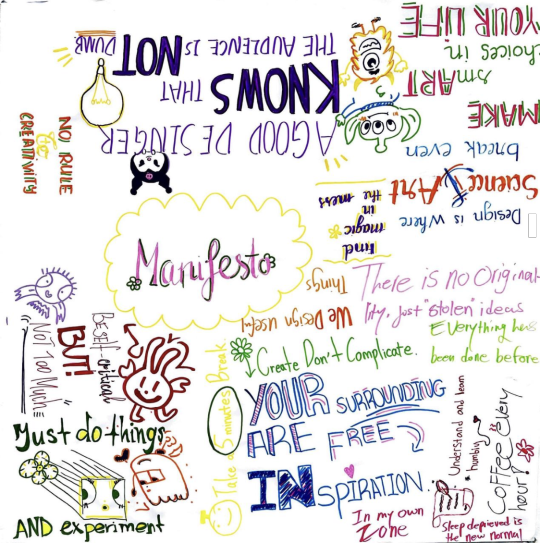Text
CTS B Question2 (Week 12)
During week 10 of CTS B, we embarked on a journey to find and define our artistic vision as graphic design students. As a graphic designer, my artistic vision is to create designs that appeal to the viewer and evoke emotions. I strive to combine colors, shapes, and typography in such a way that they are visually appealing and effectively convey the intended message. I believe that good design can not only attract attention but also inspire and change perspectives.
For me, it's necessary to put my design and design beliefs into something big that might help people. An example of how design can work with society is the Russian project called Font of Kindness (Доброшрифт).
vimeo
Font of Kindness is one of the brightest social projects in Russia, which helps children with cerebral palsy every year. He offers people and companies to use a unique font, where each letter was written by a child with cerebral palsy, who is a ward of the charity fund "Gift to an Angel".
By participating in this project, many companies in Russia support the charity fund and raise awareness about the challenges faced by individuals with limited mobility. Through the Font of Kindness initiative, these companies replace their usual fonts in logos, product advertising, and communications. This unique approach not only attracts attention but also highlights the importance of inclusivity and supports the cause of helping children with cerebral palsy.
This project exemplifies how a simple design idea can make a significant impact in helping people and promoting unity. It demonstrates that through design, we can bring people together and raise awareness about important causes. The Font of Kindness initiative showcases the power of design to create positive change and foster inclusivity in society.
Another design project in Russia with social engagement is the "A Gift for Life" (Подари Жизнь) project. This project aims to raise awareness about organ donation and encourage more people to become organ donors. The project collaborates with graphic designers, illustrators, and artists to create visually striking artworks that convey the importance of organ donation.



Through exhibitions, online campaigns, and educational initiatives, "A Gift for Life" showcases these artworks to the public, sparking conversations and promoting the idea of organ donation as a life-giving act. The project emphasizes the power of design in conveying messages and inspiring action, ultimately contributing to saving lives and improving the quality of life for individuals in need of organ transplants.
In conclusion, design has the ability to evoke emotions, convey messages, and spark conversations. It can bring people together, shed light on important issues, and inspire individuals to take action. As graphic designers, it is our responsibility to harness the power of design to create meaningful and impactful experiences that resonate with people and contribute to positive societal change.
Word Count: 463 words
References:
0 notes
Text
Manifesto CTS B Question1 (Week 11)
As defined by the Cambridge Dictionary, a manifesto is a documented expression of an organization's ideology, objectives, and strategies, typically associated with a political party. It is a document that an individual or group uses to make their values and beliefs known to others. It serves as a statement of purpose and a call to action, setting the course for future work and aspirations.
In our class, we collectively defined our manifesto as a group of graphic designers. The key points that stood out are:
Create, Don't Complicate: We believe in the power of simplicity and clarity in design. Our goal is to communicate ideas effectively, not to confuse or complicate.
Everything Has Been Done Before: We recognize that originality in design doesn't always mean creating something entirely new. It's about finding unique ways to reinterpret and reinvent existing ideas.
No Rules, It's Just Creativity: We embrace the limitless possibilities of creativity. There are no fixed rules or formulas in design; it's an open field for experimentation and innovation.

As a graphic designer, my manifesto is to communicate ideas effectively and beautifully. I believe in the power of design to simplify complex ideas, spark emotion, and create memorable experiences. Each project for me is an opportunity to solve a problem creatively, to learn something new, and to make a positive impact. I commit to high professionalism, respect for the client's vision, and a relentless pursuit of excellence in my craft.
As an example, I would like to share about one of my favorite Russian designers, Alexander Rodchenko. He is a significant figure in the world of Russian design and proposed his own manifesto, known as Rodchenko's Constructivist Manifesto. This manifesto emphasizes the following principles:
Art and Technology Fusion: Rodchenko believed that art and technology should not exist separately, but should be fused together in order to create new and innovative designs.
Design's Role in Society: He saw the designer's role as integral to the creation of a modern society. Designers, according to him, should actively participate in shaping society and influencing its direction.
Rejecting Old Traditions: Rodchenko's manifesto also called for a complete break from old artistic traditions. He believed that traditional art forms were unable to meet the demands of a rapidly changing, modern society.
Functionalism: Another key theme in the manifesto was the emphasis on functionality in design. Rodchenko argued that every design element should serve a practical purpose

In conclusion, a manifesto serves as a guiding light, a declaration of intent and belief systems. It grounds us and helps us maintain our unique identity in the world of design. It's a constant reminder of why we do what we do, our purpose, and our philosophy. Whether it's our class manifesto, my personal manifesto, or the Constructivist Manifesto by Alexander Rodchenko, they all emphasize the transformative power of design and its ability to shape and influence society. As designers, we carry the responsibility to create with purpose, innovate with consciousness, and impact with intention.
Word Count: 495 words
References:
Cambridge Dictionary - https://dictionary.cambridge.org/dictionary/english/manifesto
Alexander Rodchenko's art works - https://www.wikiart.org/en/alexander-rodchenko
Manifesto from class work by Alison, Alisa, Norman, Nia, Zongyi, Kelvin
0 notes
Text
Connecting Practice with Society for Graphic Designers
The profession of a designer has the potential to make us powerful social agents. As designers, we have the ability to create works that not only reflect society but also critique it, initiate conversations, and even solve social problems. Through our creative practice, we can raise awareness, challenge norms, and inspire change. It is often easiest for us, as designers, to visually display and highlight the problems or important news of the world.
Socially oriented practice in design goes beyond creating aesthetically pleasing objects. It is about actively engaging with social issues and communities. Socially oriented-designers collaborate with others, actively participate in projects, and focus on creating a positive social impact. They work directly with communities, addressing social, political, or environmental problems through their projects. Their goal is to create meaningful experiences, foster dialogue, and promote positive changes in society.
For instance, in one of our lessons, we organized a mini movie festival where we highlighted different social problems in Singapore. With our skills in video editing, acting, and design, it was effortless to convey certain aspects of these problems. By showcasing these issues through our creative work, we aimed to create awareness, spark conversations, and inspire action.
In summary, as designers, we have the opportunity to be more than just creators of visually appealing designs. We can use our creative practice to actively engage with society, address important social issues, and contribute to positive changes. Through socially oriented practice, we have the power to make a meaningful impact and shape a better future.
0 notes
Text
Critical Self-Reflectivity for Graphic Designers
Critical self-reflection is the process of critically studying any of your own thoughts, actions and decisions. It seems to me that this is the same as introspection with conclusions, it includes an analysis and assessment of your beliefs, values and behavior in order to gain a deeper understanding of yourself and your actions in order to understand how you can interact with yourself first of all and of course with the world around you.
During our class, we had an activity where we visited SimLim Square to analyze the design in the building. After careful observation and discussion, we reached several conclusions. One of the strengths we identified was that SimLim Square is one of the most iconic places to search for electronics and AV gadgets, which is guaranteed to attract customers. However, we also noticed some weaknesses, such as a poor directory that makes it difficult to navigate the building. Additionally, there were instances of clustered gadgets and parts on the floor, which could pose a minor hazard.
To address these issues, we propose creating new signs for each floor to provide a better directory. These signs could indicate specific sections like art shops, coffee shops, and clubs for specific gadgets, among others. By implementing these new signs, we can improve the overall navigation experience for visitors to SimLim Square.
Our lectures provided us with detailed instructions on how to analyze and reflect on design works, and this process has been extremely valuable. It has allowed us to critically examine the strengths and weaknesses of the design, and propose practical solutions for improvement. This reflective process has enhanced our understanding of design principles and has equipped us with valuable skills for future projects.
In the context of our profession as a graphic designers, critical self-reflection involves thinking about the choice of design and work, evaluating its effectiveness, and considering the impact of design on the target audience. This can help us both analyze our work, explore alternatives, and continually improve our skills and processes.
Words: 335
0 notes
Text
Creative Practice and Critical Thinking in Graphic Design
For our life as a graphic designers creative practice and critical thinking are vital components of our work process.
Creative practice involves the application of imagination to create something new like a work of art, music, or any other thing, probably it's like expressing yourself in a piece of art in any meaning. On the other hand, critical thinking is analyzing and researching random ideas without anything materialistic aspect. It is often used in problem-solving and decision-making and is an essential skill in many spheres.
In the context of the discussion of the topic "creative practice and critical thinking" in our lesson, we explored various social problems. One of the topics I focused on was cyberbullying. With the help of critical thinking, I analyzed the complexity of the problem, assessing its impact on individuals and society as a whole. I have studied the root causes, consequences and potential solutions to effectively combat cyberbullying.
After assessing the problem, creative practice began. Based on my understanding of cyberbullying, I was looking for ways to raise awareness and combat this problem. I also analyzed the cases that happened to me in social networks. Using creative practice, I sought to develop practical and actionable activities that could empower individuals, educate communities, and contribute to creating a safer online environment.
This experience has strengthened the symbiotic relationship between critical thinking and creative practice. Critical thinking provides the foundation for making informed decisions, while a creative approach allows us to translate our ideas into real solutions. By embracing both aspects, we can solve complex social problems and contribute to positive changes in our society creative practice and critical thinking are essential in graphic design, and with that, we can create visually compelling and impactful designs that resonate with their audience.
Words: 294
0 notes